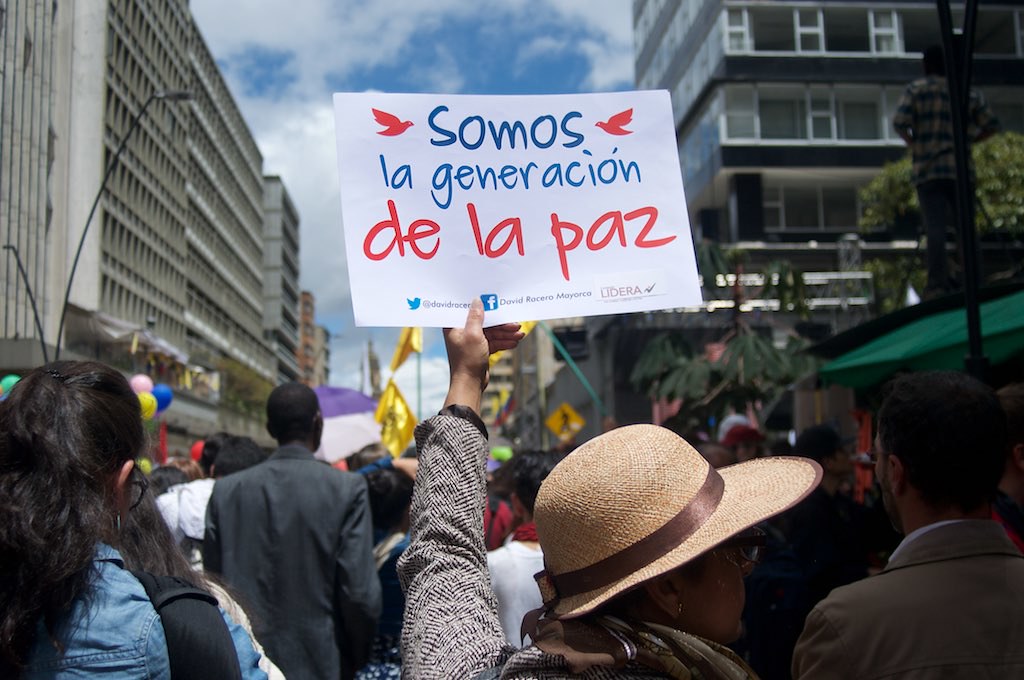Colombia’s Partial Peace and Its Discontents
Five years after the Colombian peace agreement was signed, its implementation remains hesitant and selective. The government has neglected core aspects of the progressive treaty while shifting the main focus towards stabilization. Ongoing violence due to the conflicts with and among several non-state armed groups pose a serious challenge to peace efforts.
The Colombian government and the FARC-EP signed a landmark peace agreement in 2016. With its comprehensive and multifaceted agenda, the accord not only charted a way out of the war with the largest and oldest existing rebel group at the time but also contains a plan to tackle the roots of historical cycles of violence and build lasting and sustainable peace. The balance of the accord on its fifth anniversary yields a mixed picture. Despite positive achievements, the record in crucial aspects of the agreement such as the rural reform and protection for former combatants and vulnerable communities is not encouraging. Ongoing violence and deteriorating security conditions, particularly in historically violence-ridden territories, remain as some of the most concerning aspects in the post-accord transitional phase.
A disputed and weak implementation
The Colombian Report of the Transformation Index BTI 2020 identified the full implementation of the peace accord as one of the biggest challenges for the country. The implementation has faced several obstacles and unfolded against an unfavorable political setting. Ever since the phase of negotiations, the peace process raised as a divisive issue in Colombian politics and society. Polarization increased around the plebiscite held in October 2016, in which a majority rejected the first version of the peace deal. The election of Iván Duque as president in 2018 brought about an even more complex and adverse scenario. Duque campaigned against the agreement and promised to reform some of its core dispositions, especially those related to the political participation of former FARC leadership and transitional justice. Since taking office, Duque’s government has delayed, under-funded and challenged crucial components of the accord.
Reports on the current state of the implementation coincide in highlighting the slow pace of the process, budgetary difficulties, and neglect of central aspects as major problems. According to the Kroc Institute, by November 2020, less than a third of the stipulations have been completed, 18 percent are at an intermediate phase, and 51 percent remain either at the minimum or not initiated. In total, Colombia has only spent around 15 percent of the expected expenses of the implementation. If the process continues at this pace, it is projected that the full implementation will take 26 years instead of the 15-year timeframe set in the agreement. However, the problem is not only the sluggish rollout of the programs and budget execution. The current situation of Colombian public finances, strained by the socio-economic consequences of the COVID-19 pandemic and the massive arrival of Venezuelan refugees, adds to the financial obstacles hindering the implementation.
However, beyond technical and financial obstacles, experts, practitioners, and local communities in the municipalities prioritized for the peace and development programs have warned about a growing void between the progressive and participatory approach of the agreement and the actual policy implementation. In the big scheme of things, the transformative and ambitious agenda of the original agreement has been replaced in favor of a narrower and state-centric approach focused on stabilization. The most transformative commitments of the peace accord have been abandoned. For instance, those related to the comprehensive rural reform, political participation, and illicit drugs policy.
The implementation can be certainly credited with significant successes. Notably, the demobilization of around 13,500 combatants and an ongoing process of reintegration of most of them, the transformation of the former guerrilla into a political party, the deployment of state agencies and social programs in historically marginalized areas, and the progress of the transitional justice system. In addition, the UN Verification Mission in Colombia has successfully complied with its mandates. Likewise, the support of the international community has been crucial for the peace process. Yet, these bright spots are not enough to transform the realities of people affected by violence and insecurity. They might have achieved to end the war between the state and the FARC, but structural reforms and a thorough implementation of the agreement are needed to break the cycles of violence as the surge of violence and certain forms of victimization in the recent years makes evident.
New constellation of armed actors and dynamics of violence
As the Transformation Index BTI 2020 explains, the Colombian state does not hold the monopoly on the use of force. While the 2016 peace agreement marked the end of the FARC as an armed group, other non-state armed actors of different ethos remained active. Additionally, some factions of the former FARC did not join the peace negotiations and others have rearmed in the aftermath of the signing of the peace accord. The exit of the FARC marked the end of the most unified non-state armed actor in the country and the end of a war at the national level. In this regard, current dynamics of violent conflict are more fragmented and localized. The actual constellation of non-state armed actors encompasses the Ejército de Liberación Nacional (ELN) —a left-wing guerrilla, both dissidents and rearmed factions of the demobilized FARC, and organized crime groups, whose origins are linked to right-wing paramilitary groups. The largest organized crime group is the ‘Gulf Clan’ or ‘Autodefensas Gaitanistas de Colombia’. Regarding the armed structures linked to the former FARC, it is estimated that they are present in around 15 percent of the country’s municipalities and have around 2.500 members.
Bitter disputes between non-state armed groups for the control of populations, resources, and routes are a major source of violence and instability. Yet, violence is also exerted by local actors whose interests have been affected by the implementation of the peace accord and the strengthening of local democracy and participation. Likewise, state armed forces remained a source of violence and insecurity for some vulnerable populations.
Enduring violence and insecurity
From a general perspective, the security situation in Colombia has improved significantly over the last years. Homicide rates have steadily decreased since 2008, falling to 23.9 in 2020, the lowest the country has reported since 1974. Figures suggest, however, that there is a reversal in this decreasing trend. Homicides in the period of January-September 2021 are 18 percent higher than in the same period in 2020. From a subnational perspective, regions historically affected by armed conflict report higher levels of homicides; the average homicide rate in the 170 municipalities prioritized for implementing the peace accord is above the average of the rest of the country.
Other manifestations of violence have spiked. Ever since the signing of the peace agreement, the killings of social leaders and human rights defenders have increased dramatically. According to INDEPAZ, there were 279 and 310 assassinations of social leaders in 2019 and 2020, respectively. By November 2021, 152 assassinations have been reported. About 60 percent of the killings have occurred in conflict-affected municipalities. Targeted violence has likewise affected the life of former FARC combatants. 77 ex-combatants were murdered in 2019 and 64 in 2020. INDEPAZ has recorded 152 former combatants killed or disappeared in 2021.
There has been a surge in massacres, defined as the killing of three or more people in a single incident. INDEPAZ reported 91 in 2020 and 88 through November 30th, 2021. The UN High Commissioner for Human Rights documented 66 massacres through December 20th, 2020. Forced displacement and confinement have also sharply risen. OCHA registered 67.557 victims of different modalities of forced displacement until November 2021, an enormous increase in comparison with the 11.767 victims recorded in 2020. Similarly, OCHA reported 73.789 victims of confinement in 2020 and 51.574 through November 30th, 2021. These figures are far above the 28.983 victims documented in 2019.
Faced with the worsening of security conditions, the Colombian government has relied on the traditional approach of the ‘war on drugs’ and a kingpin strategy to deal with crime and increasing violence, at the expense of the multiple institutional mechanisms and strategies envisioned in the peace accord. The narrative according to which drug trafficking is the leading cause of violence in Colombia predominates in the perspective of the government and policymakers.
The 2022 presidential elections: an opportunity for peace?
The 2016 peace agreement ushered a new phase in the long trajectory of violence and peacebuilding in Colombia. But it is not fully clear whether it will effectively prompt the reforms necessary for an enduring path to peace or, on the contrary, will mark the transition to a new cycle of violence. Certainly, the peace accord does not cover all the issues in need of reform, but it provides a map to address some of the most important ones. Although the balance five years later lags behind the expectations, there is yet room to boost the implementation. To this aim, the following years are crucial. Hence, the next presidential term will be decisive for the future of peacebuilding in Colombia. The position of the coming government vis-à-vis the accord will determine whether it will be a lost opportunity or whether Colombia will give peace a fresh chance.

